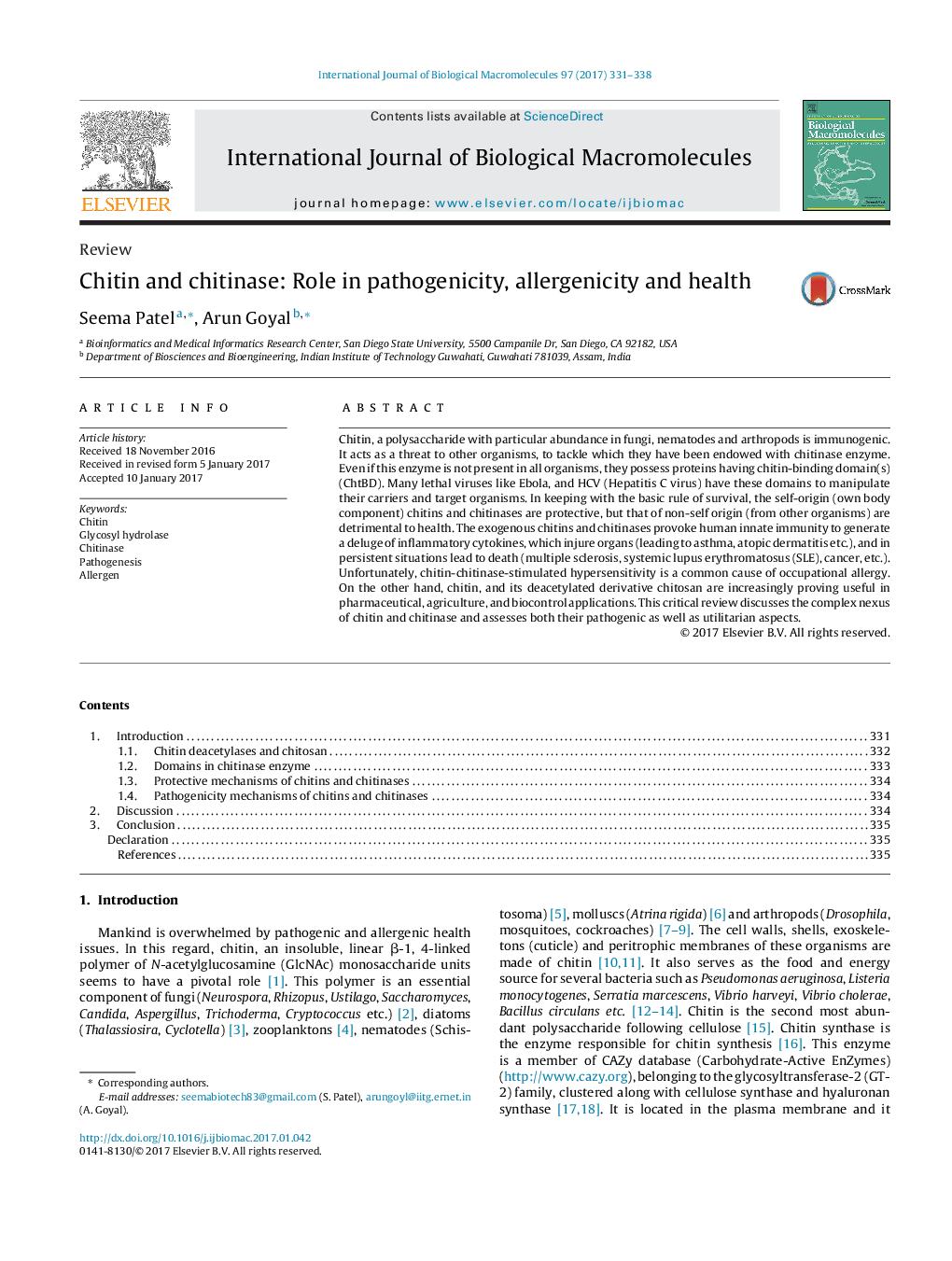| Article ID | Journal | Published Year | Pages | File Type |
|---|---|---|---|---|
| 5512607 | International Journal of Biological Macromolecules | 2017 | 8 Pages |
Abstract
Chitin, a polysaccharide with particular abundance in fungi, nematodes and arthropods is immunogenic. It acts as a threat to other organisms, to tackle which they have been endowed with chitinase enzyme. Even if this enzyme is not present in all organisms, they possess proteins having chitin-binding domain(s) (ChtBD). Many lethal viruses like Ebola, and HCV (Hepatitis C virus) have these domains to manipulate their carriers and target organisms. In keeping with the basic rule of survival, the self-origin (own body component) chitins and chitinases are protective, but that of non-self origin (from other organisms) are detrimental to health. The exogenous chitins and chitinases provoke human innate immunity to generate a deluge of inflammatory cytokines, which injure organs (leading to asthma, atopic dermatitis etc.), and in persistent situations lead to death (multiple sclerosis, systemic lupus erythromatosus (SLE), cancer, etc.). Unfortunately, chitin-chitinase-stimulated hypersensitivity is a common cause of occupational allergy. On the other hand, chitin, and its deacetylated derivative chitosan are increasingly proving useful in pharmaceutical, agriculture, and biocontrol applications. This critical review discusses the complex nexus of chitin and chitinase and assesses both their pathogenic as well as utilitarian aspects.
Related Topics
Life Sciences
Biochemistry, Genetics and Molecular Biology
Biochemistry
Authors
Seema Patel, Arun Goyal,
